Potrebujeme váš súhlas na využitie jednotlivých dát, aby sa vám okrem iného mohli ukazovať informácie týkajúce sa vašich záujmov. Súhlas udelíte kliknutím na tlačidlo „OK“.
ASTM D5384-14
Standard Test Methods for Chlorine in Used Petroleum Products (Field Test Kit Method)
Automaticky preložený názov:
Štandardné skúšobné metódy pre chlóru v použitých ropných produktov (Field súprava Method)
NORMA vydaná dňa 1.6.2014
Informácie o norme:
Označenie normy: ASTM D5384-14
Poznámka: NEPLATNÁ
Dátum vydania normy: 1.6.2014
Kód tovaru: NS-30968
Počet strán: 4
Približná hmotnosť: 12 g (0.03 libier)
Krajina: Americká technická norma
Kategória: Technické normy ASTM
Kategórie - podobné normy:
Anotácia textu normy ASTM D5384-14 :
Keywords:
chlorine, field test, halogen, on-site testing, test kit, used oil, ICS Number Code 75.080 (Petroleum products in general)
Doplňujúce informácie
| Significance and Use | ||
|
4.1 Chlorinated compounds can lead to corrosion of equipment and poisoning of the catalyst. Chlorinated compounds also present a health hazard when incompletely combusted. Chlorine content of petroleum products is determined prior to their being recycled. Note 1: Federal Regulations mandate that often the chlorine
content of used oil must be determined before recycling. EPA
regulation 40 CFR 261 bars the sale of used oil for fuel if it is
contaminated with halogens measured as chlorine at levels exceeding
1000 mg/kg. Such oil is considered to be a hazardous waste unless
it can be proven that the chlorine content is inorganic or that the
halogenated organics are not hazardous constituents. The cost of
disposing of a hazardous waste is many times higher than the cost
of used oil disposal. Therefore it is critical for users,
generators, haulers, reprocessors, and collectors to test the
material they handle in order to comply with regulations, maintain
safe operations, and avoid high disposal costs.
4.2 These test methods can be used to determine when a used petroleum product meets or exceeds requirements for total halogens measured as chloride. It is specifically designed for used oils, permitting on-site testing at remote locations by nontechnical personnel to avoid the delays of laboratory testing. |
||
| 1. Scope | ||
|
1.1 These test methods cover the determination of chlorine in used oils, fuels, and related materials, including: crankcase, hydraulic, diesel, lubricating and fuel oils, and kerosene, all containing <25 % (mass/mass) water. 1.1.1 If the sample contains greater than 25 % water, the sodium metal reacts preferentially with the water rather than with the halogenated organics in the oil. 1.1.2 Bromide and iodide are also titrated and reported on a molar basis as chlorine. The method does not detect fluorine because AgF remains in the solution during the titration, while AgI, AgBr, and AgCl precipitate out and can therefore be detected. 1.1.3 Some of the chlorinated organic compounds that have been shown to be detectable by this method include trichloroethane, dichloroethane, trichlorobenzene, monochlorobenzene, chlorooctadecane, methylene chloride, perchloroethylene, Freon, and polychlorinated biphenyls. These nine compounds represent the major classes of chlorinated compounds that are found in used oils. 1.2 The entire analytical sequence, including sampling, sample pretreatment, chemical reactions, extraction, and quantification, is available in kit form using predispensed and encapsulated reagents. The overall objective is to provide a simple, easy to use procedure, permitting nontechnical personnel to perform a test in or outside of the laboratory environment in under 10 min. The test method also gives information to run the test without a kit. 1.2.1 Test Method A is preset to provide a greater than or less than result at 1000 mg/kg (ppm) total chlorine to meet regulatory requirements for used oils. 1.2.2 Test Method B provides results over a range from 200 to 4000 mg/kg total chlorine. 1.3 For both test methods, positive bias will result from samples that contain greater than 3 % (mass/mass) total sulfur. While a false negative result will not occur, other analytical methods should be used on high sulfur oils. 1.4 Test Method B, Lower Limit of Quantitation—In the round-robin study to develop statistics for this test method, participants were asked to report results to the nearest 100 mg/kg. The lower limit of quantification could therefore only be determined to be in the range from 870 mg/kg5 to 1180 mg/kg5. 1.5 The values stated in SI units are to be regarded as standard. No other units of measurement are included in this standard. 1.6 This standard does not purport to address all of the safety concerns, if any, associated with its use. It is the responsibility of the user of this standard to establish appropriate safety and health practices and determine the applicability of regulatory limitations prior to use. Specific safety statements are given in Sections 3, 6, and 7. |
||
| 2. Referenced Documents | ||
|
Podobné normy:
Historická
15.6.2013
Historická
1.10.2009
Historická
1.6.2011
Historická
1.6.2014
Historická
1.5.2014
Historická
15.4.2012


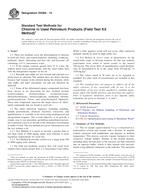
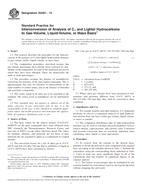 ASTM D2421-13
ASTM D2421-13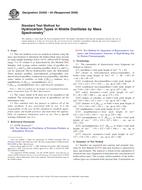 ASTM D2425-04(2009)..
ASTM D2425-04(2009)..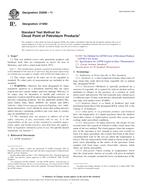 ASTM D2500-11
ASTM D2500-11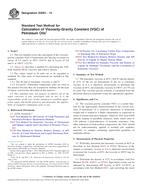 ASTM D2501-14
ASTM D2501-14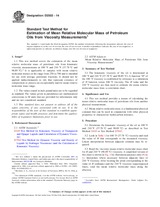 ASTM D2502-14
ASTM D2502-14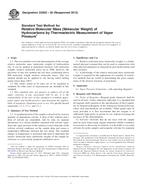 ASTM D2503-92(2012)..
ASTM D2503-92(2012)..
 Cookies
Cookies
